|
VATICAN CITY - 26 April 2016, Pope Francis received Cardinal Angelo Amato, sdb, Prefect of the Congregation for the Causes of Saints in a private audience. In the course of the audience, the Holy Father authorized the Congregation to promulgate decrees regarding:
1 Comment
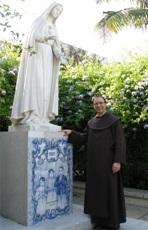 Carmelite Father Romano Gambalunga, is the new Postulator leading the Cause of Beatification of Sister Lúcia. He was born in Trento in 1970. He made his Solemn Profession as a Discalced Carmelite in 1996 and was ordained a priest in 1997. He graduated in Spiritual Theology at the Institute of Spirituality at the Faculty of Theology Teresianum in Rome, and in Philosophy and Spirituality at the Pontificio Ateneu S. Anselmo in Rome, where he also earned a doctorate in the History of Theology. He was appointed Postulator General of the Order of Discalced Carmelites on June 6, 2012, succeeding the previous Postulator P. Iidefonso Moriones. In July 2013, he moved to Portugal, and took charge of the Diocesan phase of the Process, to deepen his knowledge about the development of the Cause of Beatification of Sister Lúcia and visit the places where she lived, Fátima and Coimbra. It was concluded that the work of the Cause of this Servant of God is very large, given to her long life, her many writings and with the many issues that she was involved and related to. In his opinion, the Process is to be developed in the best possible way, since a large part of the work has been done which is necessary for the completion of this diocesan phase. He expressed the desire that soon, the Cause could reach Rome, there, to give a continuation to its development. P. Romano also took knowledge of two cases that may be considered miracles, that will be analyzed and studied in Rome, by competent experts. SOURCE: http://www.lucia.pt/ 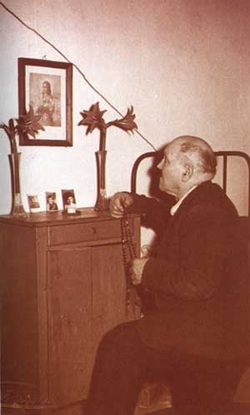 __Maria Goretti's heroic story of love and forgiveness would not be complete without one of its first miraculous fruits: the conversion of Alessandro Serenelli, Maria's murderer. Immediately after his brutal assault on young Maria Goretti, Alessandro was imprisoned temporarily in Nettuno and then transferred to Regina Coeli prison in Rometo stand trial. After vehemently denying his guilt, he finally broke down in the face of overwhelming testimony. Since he was a minor, he was sentenced to only thirty years hard labor.A priest came to see him soon afterward, and he turned on the cleric in rage, howling like a maniac and lunging at him.In the days which followed, Alessandro lost his appetite and grew nervous. After six years of prison, he was near the brink of despair. Then one night, Maria appeared to him in his cell. She smiled at Alessandro and was surrounded by lilies, the flower symbolic of purity.From that moment, peace invaded Alessandro's heart, and he began to live a constructive life.After serving his sentence, Alessandro took up residence at a Capuchin monastery, working in the garden as a tertiary. He asked pardon of Maria's mother and accompanied her to Christmas Mass in the parish church where he spoke before the hushed congregation, acknowledging his sin and asking God's forgiveness and the pardon of the community.Forty years later, on June 24, 1950, Maria was canonized at St. Peter's basilica in Rome, with Alessandro's heart now firmly converted to the Lord. A miraculous fruit of Maria's life, indeed! Alessandro Serenelli died on May 6th, 1970 in the Capuchin convent of Macerata. He left the following testimony, dated May 5, 1961, as his spiritual legacy: _"I'm nearly 80 years old. I'm about to depart. "Looking back at my past, I can see that in my early youth, I chose a bad path which led me to ruin myself. For Biography of St. Maria Goretti click this link http://ajpm.weebly.com/1/post/2012/06/st-maria-goretti.html
Source: http://www.mariagoretti.org/alessandrobio.htm 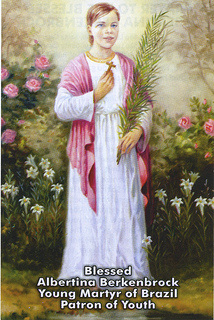 Albertina Berkenbrock was born on 11 April 1919 in São Luís, Imaruí, Santa Catarina, Brazil. She was baptized on 25 May 1919 and confirmed on 9 March 1925. She made her First Holy Communion on 16 August 1928. Albertina grew up in a devout family. She willingly helped her parents at home and on the land. At an early age she learned to pray with deep devotion and was strong in the practice of her Catholic faith. She spoke of her First Communion Day as the most beautiful day of her life and had special devotion to Our Lady and to St Aloysius Gonzaga, a model of purity and the Patron Saint of São Luís. At school Albertina was a model for her peers and a cause of admiration to adults. Her teachers especially praised her spirituality and morals, superior to children of her age. She was a diligent student who knew her Catechism and kept God's Commandments. At home, when her brothers teased and taunted her, as siblings do, she would not retaliate. With her Christian upbringing, even the childhood games she played reflected her deep religious sense. She played happily with the poorest children and shared her bread with them. At home, she was especially loving to the children of an employee of her father; while unknown to her, that man would become her future assassin. His name was Maneco Palhoça but he was also known as Indalício Cipriano Martins or as Manuel Martins da Silva. Albertina often gave food not only to his children but to him as well. Since Maneco was African and racism was still a grave social ill, the young girl's goodness was especially noteworthy. One day when Albertina was searching for a runaway bullock she came across Maneco loading beans into his cart. When she asked him if he had seen the bullock he pointed in the wrong direction to entice her to a place where he could satisfy his lust without attracting attention. Innocently, Albertina followed Maneco's directions and came to a wooded area. On hearing twigs cracking she turned, thinking it was the bullock, and found herself face to face with Maneco. She was petrified. He informed her of his intentions but she firmly refused him. Albertina fought hard for her virtue. Even when he threw her to the ground, she did her best to cover herself. Furious at having been morally defeated by the young girl, Maneco grasped her by the hair and slit her throat with a knife. Maneco tried to cover up his crime. He said he had discovered her body and accused a man called João Candinho of killing her, who protested his innocence in vain. But people became suspicious because when Maneco passed through the room where Albertina's body was laid out, witnesses said that every time he approached her body, blood would seep from the gash in her neck. Two days later, the Prefect of Imaruí sent for João Candinho. The official took a crucifix and together with Candinho and others, went to Albertina's home. He placed the crucifix on her chest, ordered João Candinho to lay his hands on the crucifix and swear that he was innocent. It is said that at that very instant the wound in her neck stopped bleeding. Maneco tried to flee but was arrested. He confessed to his crime as well as two other murders. He was tried, convicted and given a life sentence. In prison he admitted to his fellow prisoners that he murdered Albertina because she resisted his rape attempts. This testimony from his own lips is fundamental for determining this as a true martyrdom. Albertina's reaction is unequivocal, since she preferred to die rather than to submit. On the very day of Albertina's death, the young girl was popularly proclaimed a martyr because everyone who knew her could testify to her Christian upbringing, good behaviour, piety and charity. Her reputation as a martyr was confirmed when the local midwife who had examined her body stated that the attempted rape was not a success. Shortly thereafter, people began speaking of graces received through Albertina's intercession. She was buried in the cemetery at São Luís, but due to the fame of her martyrdom and the favours obtained through her intercession, her body was later placed in the Church of São Luís. Taken from the Vatican Website 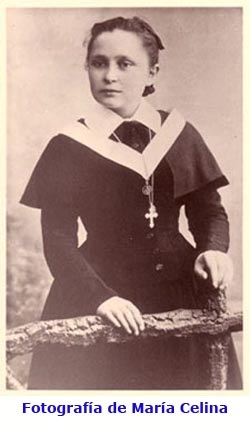 Jeanne-Germaine Castang was born on 23 May 1878 at Nojals, east of Bergerac de Périgord, France. She was the fifth of 11 children born into an impoverished but deeply religious family. Her father's relatives were landowners and her mother's, notaries. She was a pretty, resourceful child with her own strong character but who already showed an inclination to the consecrated life. Poliomyelitis, which struck at the age of 4, left her with only one sound leg and a permanent limp. This disability did not affect her piety nor deter her from assisting at home, especially after her elder sister's admission to the Order of St Joseph at Aubenas and later, after the premature death of her mother in December 1892, while caring for her eldest brother who had tuberculosis. During that period she slept on the floor beside her brother's bed and it was probably then that she herself contracted the disease. Jeanne-Germaine attended the local school run by the Sisters of St Joseph in Nojals. Here, she grew in faith and despite her young age became known for her devotion to the Most Blessed Sacrament. It is likely that here too, the seeds of her vocation flourished. Her father was unsuccessful with the grocery store-café he had opened in Nojals. Thus, the family was forced to move from their home to a damp, dilapidated barn. They were so poor that Jeanne-Germaine was obliged to beg for food, going from one farm to the next despite the festering sore that had developed on her paralysed foot. Unable to keep his family, her father left for Bordeaux in search of work; the family joined him later. Three of the children had died in Nojals; two others died in Bordeaux of TB and malnutrition. In 1892, Mr Castang found a job as doorkeeper at a castle in La Réole and his family went to live there. Jeanne-Germaine, however, remained in Bordeaux, where she had been taken in at the outset by the Sisters of Nazareth, with whom she stayed five years. She underwent surgery on her foot at the local paediatric hospital. With the Sisters she learned to sew and was prepared for her First Communion and Confirmation. After her brother's death in 1893, Jeanne Germaine desired to join her sister in the Order of St Joseph at Aubenas. When she was refused due to her disability, as she had been earlier by the Poor Clares, she returned to the Sisters of Nazareth. At this time, Jeanne-Germaine went for a walk with a friend who suggested she visit the Ave Maria Community of the Poor Clares at Talence, not far from Bordeaux; seeing beyond her handicap, the Mother Superior was able to discern her exceptional religious disposition. So it was that on 12 June 1896, she was admitted to the Community in Talence (today incorporated into the Community of Poor Clares at Perpignan). Her father did not wish to lose his daughter, but agreed on condition that she send him a photograph. The following 21 November, she was clothed in the habit of the Second Order of St Francis and took the name "Marie-Céline of the Presentation of the Blessed Virgin Mary". The relentless advance of the tuberculosis did not stop her from fully immersing herself in the austere lifestyle of the contemplative nuns. Her love for God, the Church and her Sisters increased and she accepted with humility the supernatural manifestations of God's love. When the Superior became aware of the deterioration of her health and called the doctor, it was too late. Sr Marie-Céline was permitted to make her final vows on her deathbed; she died of tuberculosis of the bone on 30 May 1897 when she was only 19 years old. At the beginning of the 20th century, Sr Marie-Céline's burial place at the Convent of the Poor Clares of Talence became a pilgrimage destination; since June 2006, her mortal remains rest in the Parish Church of Nojals-et-Clottes, where she worshipped as a child. The aura of holiness which had surrounded Sr Marie-Céline in her lifetime soon led to the introduction of her cause of Beatification. Pope Pius XII decreed her heroic virtues on 22 January 1957 and in December 2006, Pope Benedict authorized the promulgation of a decree concerning a miracle attributed to her intercession. This young nun who wrote: "I am determined to be a violet of humility, a rose of charity, and a lily of purity for Jesus", lives on as a model for all those who are ill or suffer from physical handicaps, poverty and marginalization. After her death, she appeared to many via fragrances, which earned her the nickname: "Saint of the Perfumes". Taken from The Vatican Website VATICAN CITY - Yesterday, 27 March 2013, the Holy Father received in audience Cardinal Angelo Amato S.D.B., prefect of the Congregation for the Causes of Saints. During the course of the audience the pontiff authorized the dicastery to promulgate the decrees concerning:
- a miracle, attributed to the intercession of the Venerable Servant of God REGINA CHRISTINE WILHELMINE BONZEL (in religion: MARIA THERESIA), founder of the Institute of the Franciscan Sisters of Perpetual Adoration; born on 17 September 1830 in Olpe, Arnsberg (Germany) and died there on 06 February 1905; declared venerable on 27 March 2010; - the martyrdom of the Servants of God MANUEL BASULTO JIMÉNEZ, bishop of Jaén, and 5 COMPANIONS, from the clergy and lay faithful of the diocese of Jaén; killed in odium fidei between 1936 and 1937 in the religious persecution during the Spanish Civil War; - the martyrdom of the Servants of God JOSÉ MAXIMO MORO BRIZ and 4 COMPANIONS, from the clergy and lay faithful of the diocese of Ávila; killed in odium fidei in 1936 in the religious persecution during the Spanish Civil War; - the martyrdom of the Servant of God vLADIMIR GHIKA, priest of the archdiocese of Bucharest; born on 13 May 1920 in 25 December 1873 in Istanbul (Turkey) and killed in odium fidei on 16 May 1954 in Bucharest (Croatia); - the martyrdom of the Servants of God JOAQUÍN JOVANÍ MARÍN and 14 COMPANIONS, priests from the Society of the Diocesan Laborer Priests of the Sacred Heart of Jesus ; killed in odium fidei between 1936 and 1938 in the religious persecution during the Spanish Civil War; - the martyrdom of the Servants of God MIGUEL FRANCISCO GONZÁLEZ-DÍEZ GONZÁLEZ-NÚÑEZ (in religion: ANDRÉS FROM PALAZUELO)and 31 COMPANIONS, professed priests and religious of the Order of Friars Minor Capuchins; killed in odium fidei between 1936 and 1937 in the religious persecution during the Spanish Civil War; - the martyrdom of the Servant of God GIUSEPPE GIROTTI, professed priest of Order of Preachers (Dominicans); born on 19 July 1905 in Alba, Cuneo (Italy) and killed in odium fidei on 01 April 1945 in Dachau, Oberbayern (Germany); - the martyrdom of the Servant of God SÁNDOR ISTVÁN, professed religious of the Society of St. Francis de Sales (Salesians of Don Bosco); born on 13 May 1920 in 26 October 1914 in Szolnok, Jász-Nagykun-Szolnok (Hungary) and killed in odium fidei on 08 June 1953 in Budapest (Hungary); - the martyrdom of the Servant of God ROLANDO RIVI, seminarian of the diocese of Reggio Emilia-Guastalla ; born on 07 January 1931 in San Valentino Castellarano, Reggio Emilia (Italy) and killed in odium fidei on 13 April 1945 in Piani di Monchio, Modena (Italy); - the heroic virtues of the Servant of God ELADIO MOZAS SANTAMERA, priest of the archdiocese of Madrid and founder of the Josephite Sisters of the Holy Trinity; born on 18 February 1837 in Miedes de Atienza, Guadalajara (Spain) and died on 18 March in Plasencia, Cáceres (Spain); - the heroic virtues of the Servant of God MANUEL APARICI NAVARRO, priest of the archdiocese of Marid; born on 11 December 1902 in Madrid (Spain) in Madrid (Spain) and died there on 28 August 1964; - the heroic virtues of the Servant of God MOISÉS LIRA SERAFIN, professed priest of the Missionaries of the Holy Spirit; and founder of , Missionaries of Charity of Mary Immaculate; born on 16 September 1893 in Tlatempa, Zacatlán, Puebla (Mexico) and died on 25 June 1950 in Mexico City (Mexico); - the heroic virtues of the Servant of God ANGELO FONTANAROSA (in religion, GENEROSO OF THE CRUCIFIED), professed priest of the Congregation of the Passion (Passionists); born on 06 November 1881 in Vetralla, Viterbo (Italy) and died on 09 January 1966 in Mascalucia, Catania (Italy); - the heroic virtues of the Servant of God OLINTO MARELLA, priest of the archdiocese of Bologna; born on 14 June 1882 in Pallestrina, Venice (Italy) and died on 06 September 1969 in San Lazzaro di Savena, Bologna (Italy); - the heroic virtues of the Servant of God ANTONI KOWALCZYK, professed religious of the Missionary Oblates of Mary Immaculate; born on 16 September 1893 in Dzierżanów, Krotoszyn (Poland) and died on 10 July 1947 in Saint-Albert, Alberta (Canada); and, - the heroic virtues of the Servant of God SÍLVIA CARDOSO FERREIRO DA SILVA, lay faith of the diocese of Porto; born on 26 July 1882 in Paços de Ferreira, Porto (Portugal) and died 02 November 1950 in Paços de Ferreira, Porto (Portugal). As 2012 draws to a close, we ask you to remember Ad Jesum Per Mariam Catholic Lay Ministry when making your charitable donations. During this "Year of Faith," Pope Benedict is calling the faithful, first, to personal conversion, and then to evangelization – both of which are part of our mission. By supporting AJPMCLM , you help evangelize the world – and what could be more important! Please remember to keep us between your gas and electric bill!" You can donate now by logging onto https://ajpm.weebly.com/support-us.html for more details VATICAN CITY - Today, 20 December 2012, Pope Benedict XVI received in a private audience Angelo Cardinal Amato, sdb, prefect of the Congregation of the Causes of the Saints. During the audience, the Holy Father authorized the Congregation of the Causes of Saints to promulgate the following twenty-four decrees regarding:
- a miracle, attributed to the intercession of Blesseds Antonio Primaldo and Companions, laypersons of the diocese of Otranto, killed in odium fidei on 13 August 1480 in Otranto (Italy); cult confirmed on 14 December 1771; martyrdom recognized on 06 July 2007; - a miracle, attributed to the intercession of the Blessed MarÍa Laura DE JESÚS Montoya Upegui (in religion, Laura of Saint Catherine of Siena), founder of the Congregation of the Missionary Sisters of the Immaculate Virgin Mary and Saint Catherine of Siena; born on 26 May 1874 in Jericó, Antioquía (Colombia) and died on 21 October 1949 in Belencito, Medellín, Antioquía (Colombia); beatified on 25 April 2004; - a miracle, attributed to the intercession of the Blessed Anastasia Guadalupe García Zavala (in religion, María Guadalupe), cofounder of the Handmaids of Saint Margaret Mary and of the Poor; born on 27 April 1878 in Zapopan, Jalisco (Mexico) and died on 24 June 1963 in Guadalajara, Jalisco (Mexico); beatified on 25 April 2004; - a miracle, attributed to the intercession of the Venerable Servant of God ANTONIO FRANCO, ordinary of the territorial prelature of Santa Lucia del Mela; born on 26 September 1585 in Naples (Italy) and died on 02 September 1626 in Santa Lucia del Mela, Messina (Italy); declared venerable on 14 January 2011; - a miracle, attributed to the intercession of the Venerable Servant of God José Gabriel del Rosario Brochero, priest of the diocese of Córdoba; born on 16 March 1840 in Santa Rosa de Río Primero, Córdoba (Argentina) and died on 26 January 1914 in Villa del Tránsito, Córdoba (Argentina); declared venerable on 19 April 2004; - a miracle, attributed to the intercession of the Venerable Servant of God CRISTÓBAL LÓPEZ DE VALLADOLID OREA (in religion: CRISTÓBAL OF SAINT CATHERINE), professed priest, Third Order Regular of Saint Francis and founder of the Congregation of the Franciscan Hospitallers of Jesus the Nazarene; born on 25 July 1638 in Mérida, Badajoz (Spain) and 21 July 1690 in Córdoba (Spain); declared venerable on 28 June 2012; - a miracle, attributed to the intercession of the Venerable Servant of God ZOFIA CZESKA-MACIEJOWSKA, founder the Congregation of the Virgins of the Presentation of the Blessed Virgin Mary; born in 1584 in Budziszowice, Kazimierski (Poland) and died in Kraków (Poland) on 01 April 1650; declared venerable on 27 June 2011; - a miracle, attributed to the intercession of the Venerable Servant of God MAŁGORZATA SZEWCZYK (in religion: ŁUCJA), founder of the Congregation of the Daughters of the Sorrowful Mother of God ‒ Seraphic Sisters; born ca. 1828 in Shepetivka (a.k.a. Szepetówka), Khmelnytskyi (Ukraine) and died on 05 June 1905 in Nieszawa, Aleksandrów (Poland); declared venerable on 19 December 2011; - the martyrdom of the Servant of God Miroslav Bulešić, priest of the diocese of Poreč i Pula; born on 13 May 1920 in Čabrunići, Svetvinčenat, Istarska (Croatia) and killed in odium fidei on 24 August 1947 in Lanišće, Istarska (Croatia); - the martyrdom of the Servants of God JOSÉ XAVIER GOROSTERRATZU JAUNARENA and 5 COMPANIONS, professed priests and religious of the Congregation of the Holy Redeemer (Redemptorists); killed in odium fidei between 1936 and 1938 in the religious persecution during the Spanish Civil War; - the martyrdom of the Servants of God Ricardo Gil Barcelón, professed priest of the Congregation of the Sons of Divine Providence, born on 27 October 1873 in Manzanera, Teruel (Spain), and Antonio Arrué Peiró, layperson of the archdiocese of Valencia and postulant of the Congregation of the Sons of Divine Providence, born on 04 April 1908 in Calatayud, Zaragoza (Spain), both killed in odium fidei on 03 August 1936 in El Saler, Valencia (Spain); - the martyrdom of the Servant of God MANUEL Sanz Domínguez (in religion, Manuel of the Holy Family), professed priest of the Order of Saint Jerome, restorer; born on 31 December 1887 in Sotodosos, Guadalajara (Spain) and killed in odium fidei between 06 and 08 November 1936 in Paracuellos de Jarama, Madrid (Spain); - the martyrdom of the Servants of God Josefa Pilar García Solanas (in religion, María Montserrat) and 8 COMPANIONS, professed religious of the Order of Minim Nuns, along with LUCRECIA GARCÍA SOLANAS, layperson of the archdiocese of Barcelona, killed in odium fidei on 23 July 1936 at the Sant Genís dels Agudells highway, Horta, Barcelona (Spain); - the martyrdom of the Servants of God MELCHORA ADORACIÓN CORTÉS BUENO and 14 COMPANIONS , from the Company of the Daughters of Charity of St. Vincent de Paul; killed in odium fidei between 1936 and 1937 in the religious persecution during the Spanish Civil War; - the heroic virtues of the Servant of God PaUL VI (Giovanni Battista Montini), supreme pontiff; born on 26 September 1897 in Concesio, Brescia (Italy) and died on 06 August 1978 in Castelgandolfo, Rome (Italy) ; - the heroic virtues of the Servant of God Francesco Saverio Petagna, bishop of Castellamare di Stabia, founder of the Congregation of the Religious Sisters of the Sacred Hearts; born on 13 December 1812 in Naples (Italy) and died on 18 December 1878 in Castellamare di Stabia, Naples (Italy); - the heroic virtues of the Servant of God JUAN JOSÉ JAIME Bonal Cortada, priest of the archdiocese of Zaragoza, founder of the Congregation of the Sisters of Charity of Saint Anne; born on 24 August 1769 in Terrades, Girona (Spain) and died on 19 August 1829 in Zaragoza (Spain); - the heroic virtues of the Servant of God LOUIS-MARIE BAUDOUIN, priest and founder of the Congregation of the Sons of Mary Immaculate and of the Congregation of the Ursuline Sisters of Jesus of Chavagnes; born on 02 August 1765 in Montaigu, Vendée (France) and died on 12 February 1835 in Chavagnes, Vendée (France); - the heroic virtues of the Servant of God Giovannina Franchi, founder of the Nursing Sisters of Our Lady of Sorrows; born on 24 June 1807 in Como (Italy) and died there on 23 February 1872; - the heroic virtues of the Servant of God Luisa Aveledo y AVELEDO (in religion, Marcelina of Saint Joseph), founder of the Congregation of the Sisters of the Poor of Saint Peter Claver; born on 18 June 1874 in Caracas (Venezuela) and died on 16 November 1959 in Barranquilla, Atlantico (Colombia); - the heroic virtues of the Servant of God Claudia Russo, founder of the Congregation of the Poor Daughters of the Visitation of the Blessed Virgin Mary; born on 18 November 1889 in Naples (Italy), and died there on 11 March 1964; - the heroic virtues of the Servant of God Rosa Elena Cornejo PAZMIÑO (in religion, MarÍa Francisca of the WounDs), founder of the Congregation of the Franciscan Missionary Sisters of the Immaculata; born on 11 December 1874 in Quito (Ecuador) and died there on 24 October 1964; - the heroic virtues of the Servant of God KLARA SZCZĘSNA (in religion LUDWIKA), cofounder of the Congregation of the Sister Servants of the Most Sacred Heart of Jesus; born on 18 July 1863 in Cieszki, Lubowidz, Żuromin (Poland) and died on 07 February 1916 in Kraków (Poland); and, - the heroic virtues of the Servant of God Joaquina María Mercedes Barceló Pagés (in religion, Consuelo), cofounder of the Congregation of the Augustinian Sisters of Our Lady of Consolation; born on 24 July 1857 in Sarrià, Barcelona (Spain) and died on 04 August 1940 in Manila (Philippines). 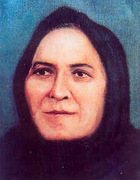 Rita Amada de Jesus was born on 5 March 1848 in Ribafeita, Portugal. She was the daughter of Manuel Lopes and Josefa de Jesus Almeida and was baptized eight days after her birth. Rita grew up in a very devout environment; her family prayed the Rosary and had spiritual reading every evening. From childhood, she showed a great devotion to Jesus in the Blessed Sacrament as well as devotion to the Blessed Mother, St. Joseph and for the Pope. In the 1830s, Masonry expropriated all Church properties in Portugal and ordered the closing of all male and female religious houses. Religious Institutes were forbidden to admit new members, with the hope that in due time they would close. Bishops and priests were also attacked and impeded from fulfilling their priestly duties. 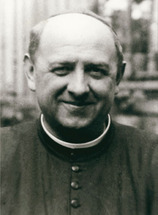 Born in Sartirana Lomellina, Province of Pavia, Italy, on October 5, 1881, Blessed Don Francesco Pianzola witnessed since childhood the austere difficulties agricultures faced for their living. Entering the Seminary of Vigevano, Pavia, where he was ordained to the Priesthood by Bishop Pietro Berruti on March 16, 1907, he kept in mind his humble roots, and successively spent his life working among the agricultures and factory workers, preaching and working beside them. Called affectionately, "don Niente", or "The Apostle of Lomellina", he founded the Padri Oblati Diocesani dell'Immacolata, and later the Istituto delle Suore Missionarie dell'Immacolata Regina della Pace, known as the Suore Pianzoline, on May 8, 1919, establishing the Mother House at Mortara. Pianzola passed away at Mortara on June 4, 1943, aged 61. His remains lie inside an urn at the Chapel of the Mother House of the Suore dell'Immacolata at Mortara. Declared Venerable by Pope Benedict XVI on June 26, 2006, Pianzola was beatified on October 4, 2008, by Cardinal José Saraiva Martins CMF., Prefect of the Congregation for the Causes of Saints, in Milan, in a ceremony attended by over 6,000 people. |
Archives
May 2016
Categories
All
|

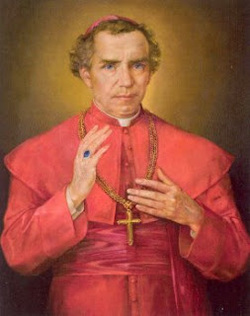
 RSS Feed
RSS Feed
